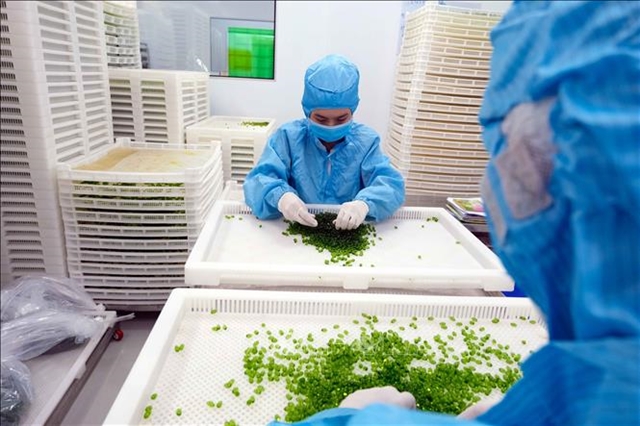Overview
Economic growth and demographic changes are driving demand for healthcare services throughout Vietnam, and not just in the two economic centers of Hanoi and Ho Chi Minh City. Public, provincial-level hospitals funded by the governments are undergoing upgrades of their facilities and opening new departments for specialty treatment. Such developments are creating new opportunities for medical devices in Vietnam. The country represents a potentially large healthcare and medical equipment market. According to Business Monitor International (BMI), Vietnam’s healthcare expenditure was estimated at $16.1 billion in 2017, which represented 7.5 percent of the country’s GDP. BMI forecasts that healthcare spending will grow to $22.7 billion in 2021, recording a compound annual growth rate (CAGR) of approximately 12.5% from 2017 to 2021.
In particular, Vietnam’s public healthcare expenditure is predicted to increase at a CAGR 9.5% in the period of 2016–2021 compared with 17.2% in the period of 2011-2016. This is partly due to the government’s effort in promoting partnerships between public and private healthcare providers to share the cost. Private healthcare expenditure is expected to grow at a CAGR of 7.5%, with a large part of the growth due to increased insurance coverage for employees.
The Vietnam healthcare sector is currently facing the following challenges:
- Most hospitals are outdated and face chronic overcrowding. Hospitals in major cities like Ho Chi Minh and Hanoi often do not have the capacity to serve both local and provincial patients.
- Much of the existing medical equipment in public hospitals in Vietnam is obsolete and needs replacement. Many hospitals lack sufficient equipment for surgery and intensive care units.
- Vietnamese public hospitals rely largely on a State budget to upgrade their facilities, equipment, and services. The total budget for the health sector has increased, but is still too low to meet the demands.
- A shortage of qualified medical staff is common in many hospitals. Doctors and nurses work under stressful conditions and wages are relatively low.
As high-quality healthcare service is not available in country, Ministry of Health (MOH) estimates that around 40,000 Vietnamese people spend approximately $2 billion to travel abroad for high quality medical service every year.
Medical Equipment
The Vietnamese government encourages the import of medical equipment because local production cannot meet demands. Imported medical equipment has low import duties and no quota restrictions. However, medical devices are subject to regulation and licensing requirements set by MOH. Only companies with a legal business entity registered in Vietnam and that have an import license are eligible to distribute medical equipment. To fulfill this requirement, foreign suppliers often sell through local distributors or agents. Good representatives should provide immediate access to an established marketing network and possess in-depth knowledge of pertinent regulations.
The MOH determines the guidelines for medical device purchases for all health systems. Within the MOH, the Department of Medical Equipment and Health Works (DMEHW) oversees medical devices. The Ministry of Science and Technology (MOST) performs regulatory functions for domestically made medical devices.The registration process for medical devices manufactured within Vietnam is different than for those that are imported. Imported devices are not required to be registered. Instead, a product specific import license is utilized. In 2011, MOH issued Circular 24 to provide updated guidance on the import of medical equipment in Vietnam. U.S. exporters should be aware of Article 5, which requires a Certificate of Free Sale to be copied and certified by the Embassy of Vietnam in the producing countries.
Imports of used and refurbished medical equipment are strictly controlled by MOH. Decision 2019/1997/QD-BKHCNMT stipulates that MOST must inspect and certify all imports of used medical equipment. Because of the restriction, local companies are generally not willing to deal with foreign suppliers of used and refurbished equipment. In practical terms, MOH accepts used equipment for donation purposes only.
The Government recently issued Decree 36/2016/ND-CP regulating the management of medical equipment, including the classification of medical equipment; production, circulation, procurement, supply of medical equipment, medical equipment labels, and the management and use of medical equipment.
Decree 36 is considered the highest legal document to date on the management of medical equipment. Under Decree 36, all medical devices imported into Vietnam are required to register for marketing authorization (MA) licenses. MOH began receiving registration dossiers on January 1, 2017, for medical devices categorized as Class A (low risk), and began receiving dossiers on July 1, 2017, for higher-risk medical devices in Classes B, C, and D. Following an extension by the Office of the Government, the registration deadline for classes B, C, and D is now January 1, 2019.
Pharmaceuticals
Vietnam’s pharmaceutical market has tremendous potential; however, domestic policies are making it more difficult for U.S. exporters to access the market.
In 2014, Vietnam issued Decision 68, a national strategy on the development of Vietnam’s pharmaceutical industry. Under Decision 68, Vietnam plans to build its domestic pharmaceutical industry and gradually replace imported medicines. By 2020, Vietnam aims to increase the share of locally procured pharmaceuticals to 80 percent of market value. Therefore, U.S. industry has expressed concern over public procurement bias towards local producers.
Vietnam’s 2016 Law on Pharmacy, which entered into force on January 1, 2017, is the primary legal framework governing the pharmaceutical sector, including registration, sale, and distribution of pharmaceuticals. U.S. companies have expressed concern that the Law creates uncertainties about the rights and responsibilities of Representatives Offices, especially whether such offices can directly or indirectly (through third parties) provide drug information to health care providers and employ medical representatives to perform these activities.
Also outlined under the strategy outlined in Decision 68, Vietnam aims to develop a domestic system of drug distribution and supply. Vietnam’s WTO Schedule of Commitments on Services intentionally excluded pharmaceuticals from the sectors for which market access is open to distribution by foreign investors. As a result, Vietnam has introduced policies that promote the development of indigenous distribution services and exclude foreign companies. Specifically, Decree No. 54/2017/ND-CP, guiding the implementation for the Law on Pharmacy, creates uncertainties for foreign invested enterprises engaged in distribution related activities. Future implementing decrees and circulars for the Law on Pharmacy are expected to provide additional guidance on which activities will be reserved for domestic companies.
Leading Sub-Sectors
The demand for investment in medical equipment will continue to increase and focus on imaging equipment, operating rooms, and emergency resuscitation testing. A recent BMI’s report shows that about 90 percent of medical equipment in Vietnam is imported, with major suppliers from Korea, China, Japan, the United States, and Germany, which account for 71 percent of medical equipment imports. Domestic manufacturers can only meet the demand for basic medical supplies. They produce products such as hospital beds, scalpels, cabinets, scissors, and disposables. They generally offer limited/no warranty or after-sales services, especially in isolated areas of the country.
Other strong areas of growth include operating theaters, orthopedics, emergency equipment, sterilizing equipment, monitoring equipment, and diagnostic equipment such as CT scanners, ultrasound machines, MRI, and X-ray machines.
Opportunities
While Decision 68 may pose challenges for some U.S. exporters, the government strategy has also created opportunities by outlining Vietnam’s plans to develop the domestic healthcare network up to 2020. These plans cover public health/preventative medicine and primary care systems, as well as medicine manufacturing and supply. Per this plan, by 2020, 25 hospital beds, at least eight physicians, and two pharmacists should be available for every 10,000 people.
There are four main classes of medical device purchasers. The largest are government-funded hospitals, which account for 80 percent of the market. Foreign-owned hospitals and clinics are also large purchasers; however, these facilities usually purchase supplies from their sponsoring country. Local private hospitals will show the strongest growth, while research and educational institutions will also account for some of the demand. Several medical education and research institutions are open to experimenting with new systems and innovative methods. These end-users present an excellent strategic opportunity to develop partnerships, given their desire to explore new technologies. Large amounts of public funds have been allocated to upgrade hospitals in the provinces. Major national-scale hospital upgrade and construction projects have been approved by the central government.Vietnam also receives a large amount of international aid in the form of loans and donated medical equipment. Several small projects are currently taking place in Vietnam, including those funded by the World Bank and the EU.







Comments